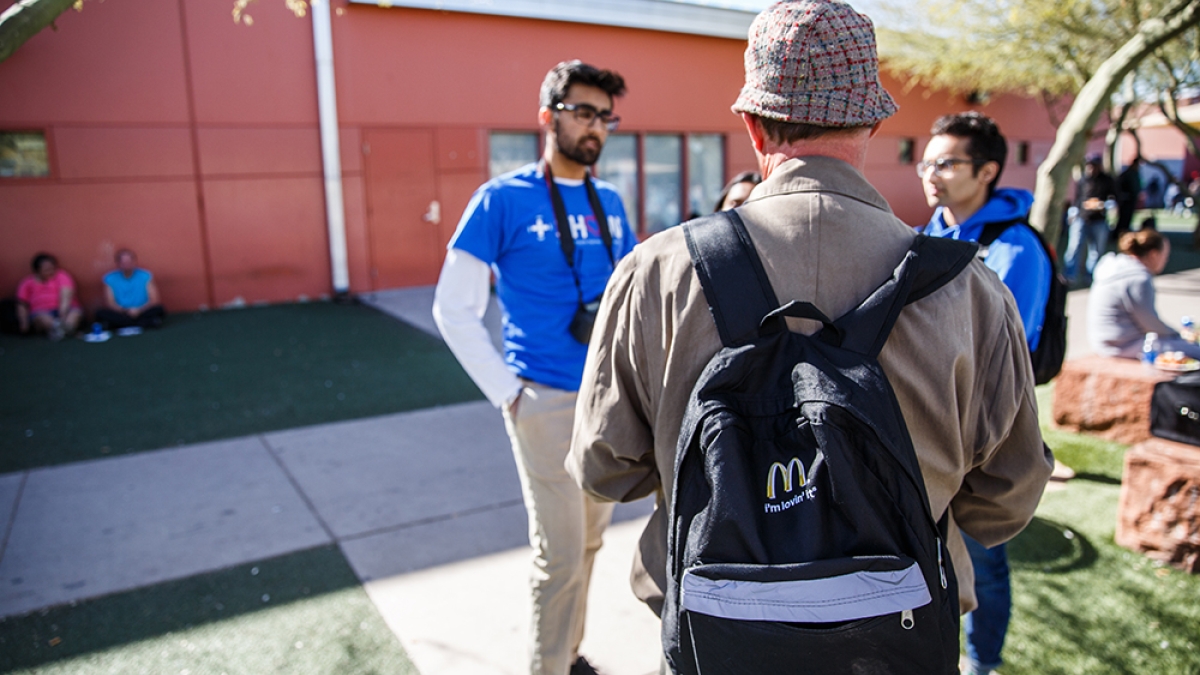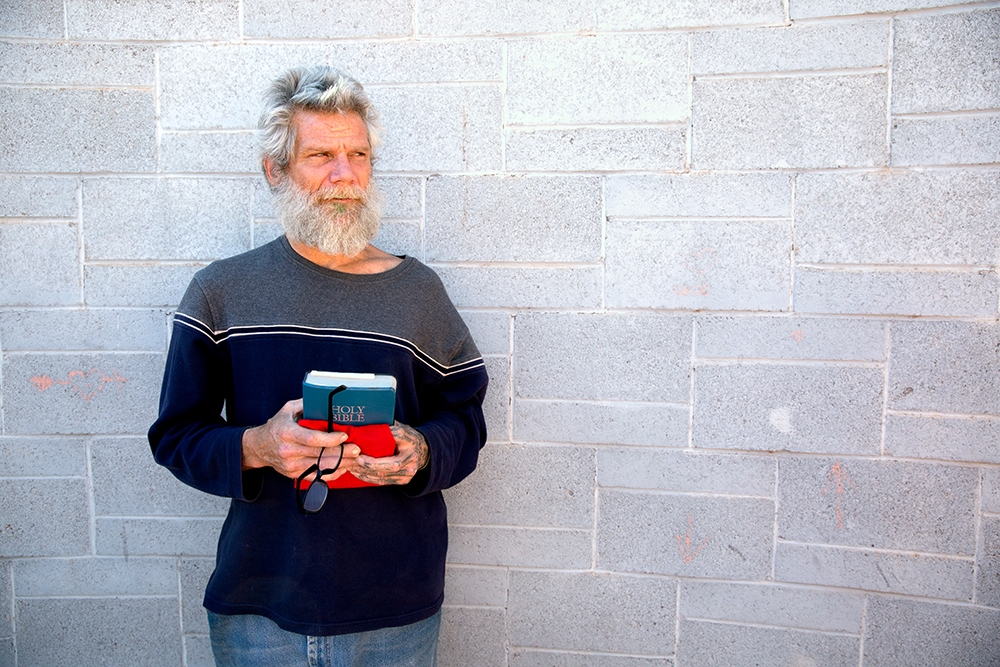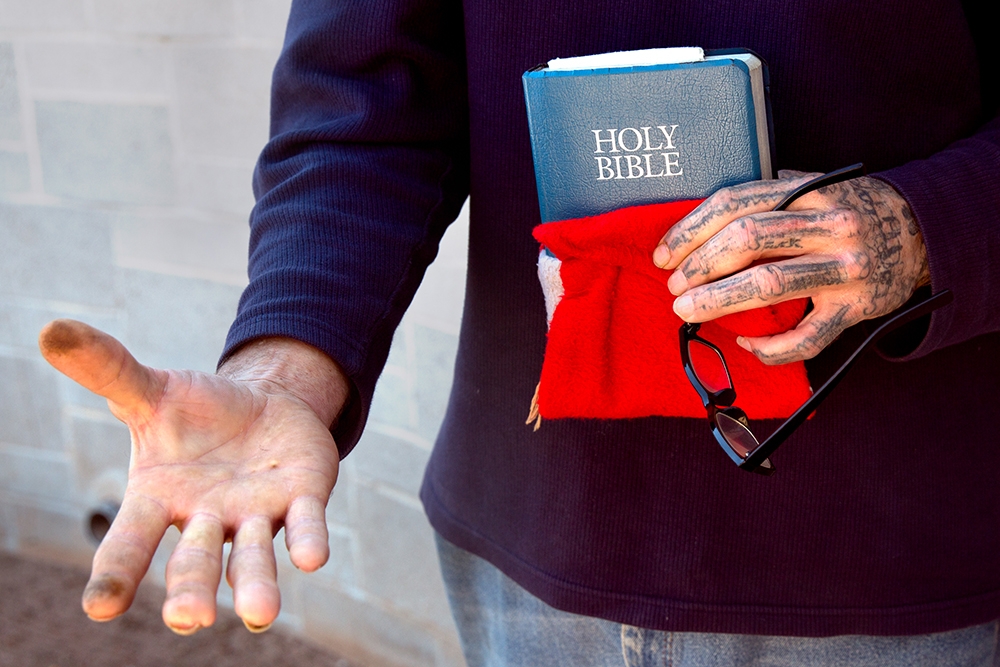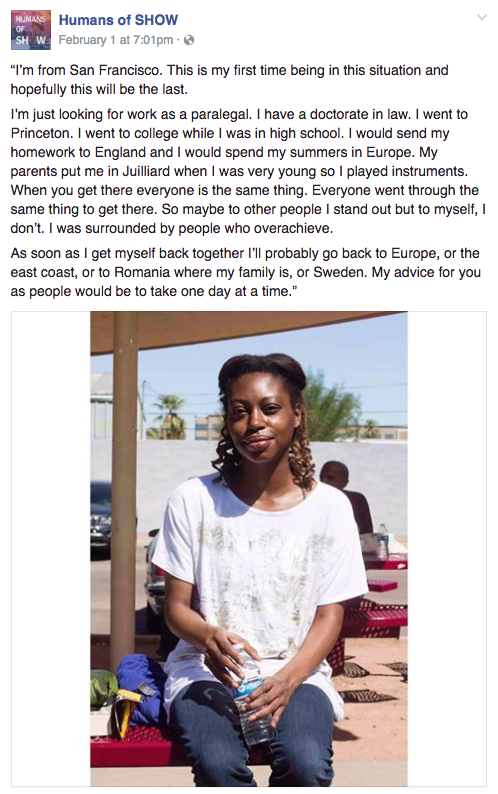There are two worlds in downtown Phoenix.
One is filled with skyscrapers, new condos and fancy restaurants. Sidewalks are clear, clean and landscaped. But on 12th Street, the skyline is far off. Homeless people gather in dozens, dragging belongings, pushing shopping carts and shuffling past the city’s Human Services Campus.
Each person here has a story, and a group of students have made it their mission to tell it.
“You can’t really write a story about us until you sit down with us, look around and understand,” said Ryan Kacey, who lives in a nearby shelter. “So many people are not willing to do that.”
Arizona State University student volunteers Faiz Khan and Chandan Saini took photos and recorded audio as Kacey described his life. The work will contribute to an online gallery, inspired by Humans of New York, to induce compassion for a group of people who often go overlooked.
Khan and Saini volunteer at the Student Health Outreach for Wellness Clinic, a health care center run by ASU, Northern Arizona University and the University of Arizona.
Between duties, they pass out water bottles, snap pictures and listen.
The stories they collect end up as part of the Humans of SHOW social media campaign that draws attention to the clinic on the Human Services Campus, featuring portrait-style photographs of the people they serve.
“People should try to engage with the homeless more,” said Saini, a senior studying psychology at ASU. “And that’s the point of this project, to break down the barriers, stereotypes and stigmas, so they can be viewed as people.”
The project is the brainchild of Maggie Delaney, a physical therapy graduate student at Northern Arizona University. It came to her after someone said something offensive.
“There was an unsavory comment I heard from a health care provider who hadn’t worked with this population before,” Delaney said. “They had an experience with a homeless client who came in and thought they didn’t deserve free or quality care because they are homeless.”
Delaney worked with three other students to pitch the idea to leadership at the SHOW Clinic, and it has grown quickly.
She wanted to give homeless people a platform, a way to be heard and seen.
“We all sit at home, and we don't think about them,” Delaney said. “They don't have a voice or avenue to let people know who they are or how they ended up homeless. They’re pretty misunderstood.”
Humans of SHOW has pushed volunteers to look beyond health care.
“I wanted to get out of my comfort zone, which is why I signed up to participate in this project,” Saini said.
A handful of stories have been published already.
“People have preconceived notions that the homeless are unhygienic, uneducated, unintelligent, unmotivated, addicted, but that’s just not true,” Khan said. “There are people like Ivy, where this is just not true. She is very educated and intelligent, but she’s in a situation that may or may not be temporary.”
The published stories don’t mention homelessness. Nor do they always show the face of the subject. It’s meant to blur the lines between people who have places to live and those who don’t. By erasing the distinction, the volunteers hope to create empathy.
“Saying these people should go get a job lacks empathy,” Delaney said. “So after this project started, I could actually tell stories about people who are in these different situations in very different ways, people who were once completely functional in society and many who are educated.”
Saini sat with a woman who wished to remain unidentified. “No one really knows me,” she said. “People talk to me. People see me. But no one knows me.”
The woman was hesitant at first, but before long she opened up to Khan and Saini.
Delaney has been pleased with the interactions. “At first, I thought no one would want to talk about it because we would ask what they think about homelessness,” Delaney said. “The last thing we wanted to do is exploit these people. I wanted them to all have a choice.”
Once the volunteers completed their rounds, they return to the clinic where they transcribe interviews, edit photos and schedule posts.
“It’s important to realize that these are people, and you need to imagine them complexly,” Khan said. “They have their own stories, and we shouldn’t turn them into a one-dimensional character or just an image in your head that you view negatively, because that is not good for anybody.”
Top photo: Ryan Kacey talks to Student Health Outreach for Wellness volunteers ASU senior Chandan Saini (left) and junior Faiz Khan as part of the Humans of SHOW project. Kacey, who is originally from New Jersey, used to be a maintenance worker in Phoenix. Photo by Anya Magnuson/ASU Now
More Health and medicine
Is ‘U-shaped happiness’ universal?
A theory that’s been around for more than a decade describes a person’s subjective well-being — or “happiness” — as having a U-shape throughout the course of one’s life. If plotted on a graph, the…
College of Health Solutions medical nutrition student aims to give back to her Navajo community
As Miss Navajo Nation, Amy N. Begaye worked to improve lives in her community by raising awareness about STEM education and health and wellness.After her one-year term ended last month, Begaye’s…
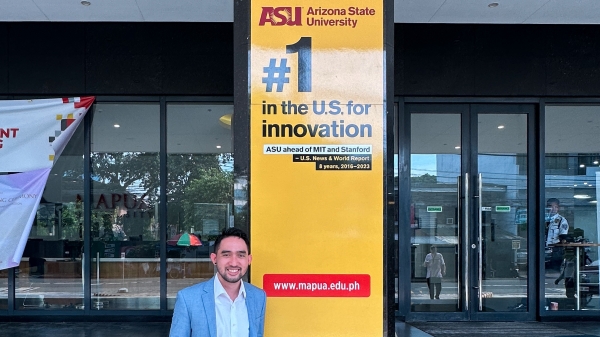
Linguistics work could improve doctor-patient communications in Philippines, beyond
When Peter Torres traveled to Mapúa University in the Philippines over the summer, he was shocked to see a billboard promoting Arizona State University.“It wasn’t even near the university,” said…
